Christianity in China

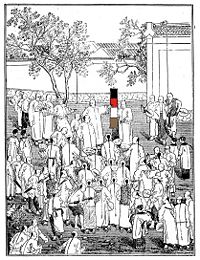
Christianity in China is a growing minority religion that comprises Protestants (called 基督教 Jī dū jiào, or Christ Religion), Catholics (天主教 Tian zhu jiao, or Lord of Heaven Religion), and a small number of Orthodox Christians. Although its lineage in China is not as ancient as beliefs such as Confucianism, Taoism, or Mahayana Buddhism, Christianity has existed in China since at least the seventh century and has gained influence over the past 200 years.[1] The growth of the faith has been particularly significant since the loosening of restrictions on religion by the People's Republic since the 1970s. Religious practices are still often tightly controlled by government authorities. Chinese over age 18 in the PRC are permitted to be involved with officially sanctioned Christian meetings through the "China Christian Council", "Three-Self Patriotic Movement" or the "Chinese Catholic Patriotic Association".[2] Many Chinese Christians also meet in "unregistered" house church meetings. Reports of sporadic persecution against such Christians in Mainland China have caused concern among outside observers[3].
Development
Christianity existed in China during several different historical periods.
Christianity was introduced to China perhaps as early as the third century. Its introduction by missionaries of the Assyrian Church of the East in the third to the fifth centuries, is considered by some to be the first entry of the Christian religion into China. Manicheanism, a now extinct religion that also treated Jesus as a figure of devotion was present in China from as early as the third century.
During the Tang dynasty, missionaries from the Assyrian Church of the East, (formerly referred to in western Europe as 'Nestorians'), [4] came to China along the silk roads. Assyrian Christianity flourished for centuries in China until the Tang dynasty adopted anti-religious measures in 845.[5] Christianity also reached the periphery of China as far as Mongolia, Tibet, Korea and Japan in the first millenium.
Christianity flourished again in China during the Yuan or Mongol dynasty (1271-1368), when Franciscan missionaries, commissioned by the Roman Pope, arrived in 1294. The Assyrian Church also substantially reappeared at this time with the Mongols. During this period the Chinese language employed the same name for both branches of the Christian faith. Organized Christianity failed to survive the end of the Yuan dynasty in China.
Another wave of missionaries came at the end of the Ming dynasty (1368-1644), when Jesuits arrived in Beijing (Peking) via Guangzhou (Canton). The most famous was Matteo Ricci (1552-1610), an Italian mathematician who came to China in 1588 and lived in Beijing in 1600. Ricci was welcomed at the imperial court and introduced recent Western learning into China. The Jesuits followed a policy of accommodation to the traditional Chinese practice of ancestor worship, but this doctrine and the Chinese Rites were eventually condemned by the Pope. Roman Catholic missions struggled in obscurity for decades afterwards.
Christianity began to take root in a significant way in the Chinese Empire during the Qing Dynasty, and although it has remained a minority religion in China, it has had significant recent historical impact. Further waves of missionaries came to China in the Qing (or Manchu) dynasty (1644-1911) as a result of contact with foreign powers. Russian Orthodoxy was introduced in 1715 and Protestants began entering China in 1807. The pace of missionary activity increased considerably after the First Opium War in 1842. Christian missionaries and their schools, under the protection of the Western powers, went on to play a major role in the Westernization of China in the 19th and 20th centuries.
The Taiping Rebellion was led by a heterodox convert to Christianity, [6] and the Boxer Rebellion was in part a reaction against Christianity in China. Christians in China established the first modern clinics and hospitals[7], and provided the first modern training for nurses. Both Roman Catholics and Protestants founded numerous educational institutions in China from the primary to the university level. Some of the most prominent Chinese universities began as religious-founded institutions. Missionaries worked to abolish practices such as foot binding [8], and the unjust treatment of maidservants, as well as launching charitable work and distributing food to the poor. They also opposed the opium trade[1] and brought treatment to many who were addicted. Some of the early leaders of the Chinese Republic, such as Sun Yat-sen were converts to Christianity and were influenced by its teachings[9].
The subject of China's Christian population is controversial. The government of the People's Republic of China census enumerated 4 million Roman Catholics and 10 million Protestants. However, independent estimates have ranged from 40 million, to 100 million, to 130 million Christians. According to China Aid, State Administration for Religious Affairs Director Ye Xiaowen reported to audiences at Beijing University and the Chinese Academy of Social Sciences that the number of Christians in China had risen to 130 million by the end of 2006, including 20 million Catholics.[10][11]
Recent studies have suggested that there are roughly 54 million Christians in China, of which 39 million are Protestants and 14 million are Roman Catholics as the most common and reliable figure among others.[12][13][14] [15]
Between 1949 and 2007, indigenous Chinese Christianity has been growing at a rate unparalleled in history[16][17]. Nicholas D. Kristof, a columnist of the New York Times wrote on June 25, 2006, "Although China bans foreign missionaries and sometimes harasses and imprisons Christians, especially in rural areas, Christianity is booming in China. [18]" Most of the growth has taken place in the unofficial Chinese house church movement. In 1800 there were 250,000 baptized Roman Catholics, but no known Protestant believers out of an estimated 362 million Chinese. By 1949, out of an estimated population of 450 million, there were just over 500,000 baptized Protestant Christians.[19] Anonymous internet columnist Spengler speculated in 2007 that Christianity could "become a Sino-centric religion two generations from now."[5]
Some Chinese terms in Christianity
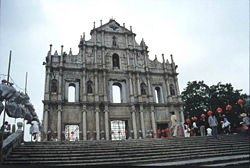
There are various terms used for God in the Chinese language, the most prevalent being Shangdi (上帝, literally, "Sovereign King Above"), used commonly by Protestants and also by non-Christians, and Tianzhu (天主, literally, Lord of Heaven), which is most commonly favored by Catholics.
While Christianity is referred to as 基督教 (Christ religion), the modern Chinese language typically divides Christians into three groups: believers of Protestantism Xin jiaotu (新教徒, literally "new religion followers"), believers of CatholicismTianzhu jiaotu (天主教徒, Lord of Heaven religion followers), and believers of Orthodox Dongzheng jiaotu (東正教徒, Eastern Orthodox religion followers, but more correctly "zhengjiaotu" 正教徒, because there is only one Chinese term for both Eastern and Oriental which is "dong" 東 and simply means the east. The latter term is more correct also because Eastern Orthodox churches are not in communion with and thus differ from the Oriental Orthodox churches.)
Pre-modern History
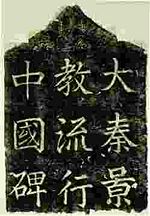
Earliest period
Christian tradition suggests that St. Thomas, known as "the Apostle of India" or possibly St. Bartholomew were the first to spread the Christian gospel in China. Third century Christian writer Arnobius mentions in a text a people known as the "Seres" as being among the groups (he enumerates also the Persians and Medes) which had been evangelized at that time. While there is evidence that Christianity existed in Mesopotamia and Persia by the early fourth century, there is no documentation that it had entered China.
The form of Christianity formerly called Nestorianism in western Europe, but now known correctly as the Assyrian Church of the East, commenced its wide spread across the continent of Asia well before the Church's autonomy from the Churches of the Roman Empire ten years prior to the Council of Ephesus in 431.
Medieval period
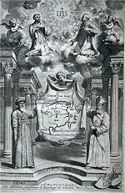
The 13th century saw communications between the Papacy and the Mongols, in attempts to form a Franco-Mongol alliance against the Muslims in the Holy Land. The Christian Chinese Mongol, Rabban Bar Sauma, born in Beijing, visited the courts of Europe in 1287-1288, and gave a report on Christianity among the Mongols.
In 1289, Franciscan friars from Europe initiated mission work in China. For about a century they worked in parallel with the Nestorian Christians. The Franciscan mission collapsed in 1368, as the Ming Dynasty set out to abolish Christianity (Nestorian and Catholic) in China.
Post-Reformation
The first Jesuit attempt to reach China was made in 1552 by Francis Xavier, but he died the same year on the Chinese island of Shangchuan, without having reached the mainland. In 1582, Jesuits once again initiated mission work in China, introducing Western science, mathematics, and astronomy. One of these missionaries was Matteo Ricci.
In the early 18th century, the Chinese Rites controversy, a dispute within the Roman Catholic Church, arose over whether Chinese folk religion rituals and offerings to their ancestors constituted idolatry. The Pope ultimately ruled against tolerating the continuation of these practices among Chinese Roman Catholic converts. Prior to this, the Jesuits had enjoyed considerable influence at court, but with the issuing of the papal bull, the emperor circulated edicts banning Christianity.
Modern Age
Missionary Expansion (1807-1900)
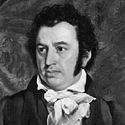
140 years of missionary seed-sowing began with Robert Morrison, regarded among Protestants as being the first Christian missionary to China arrived in Macao on 4 September, 1807[16]. Morrison produced a Chinese translation of the Bible. He also compiled a Chinese dictionary for the use of Westerners. The Bible translation took twelve years and the compilation of the dictionary, sixteen years.
During the 1840s, Western missionaries spread Christianity rapidly through the coastal cities that were open to foreign trade; the bloody Taiping Rebellion was connected in its origins to the influence of some missionaries on the leader Hong Xiuquan, who has since been hailed as a heretic by most Christian groups, but as a proto-communist peasant militant by the Chinese Communist Party. The Taiping Rebellion was a large-scale revolt against the authority and forces of the Qing Government. It was conducted from 1850 to 1864 by an army and civil administration led by heterodox Christian convert Hong Xiuquan. He established the "Heavenly Kingdom of Great Peace" with the capital Nanjing and attained control of significant parts of southern China, at its height ruling over about 30 million people. The theocratic and militaristic regime instituted several social reforms, including strict separation of the sexes, abolition of foot binding, land socialization, suppression of private trade, and the replacement of Confucianism, Buddhism and Chinese folk religion by a form of Christianity, holding that Hong Xiuquan was the younger brother of Jesus Christ. The Taiping rebellion was eventually put down by the Qing army aided by French and British forces. With an estimated death toll of between 20 and 30 million due to warfare and resulting starvation, this civil war ranks among history's deadliest conflicts.[20][21] Mao Zedong viewed the Taiping as early heroic revolutionaries against a corrupt feudal system.
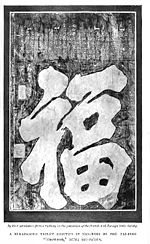
By the early 1860s the Taiping movement was almost extinct, Protestant missions at the time were confined to five coastal cities. By the end of the century, however, the picture had vastly changed. Scores of new missionary societies had been organized, and several thousand missionaries were working in all parts of China. This transformation can be traced to the Unequal Treaties which forced the Chinese government to admit Western missionaries into the interior of the country, the excitement caused by the 1859 Awakening in Britain and the example of J. Hudson Taylor (1832-1905). By 1865 when the China Inland Mission began, there were already thirty different Protestant groups at work in China[22], however the diversity of denominations represented did not equate to more missionaries on the field. In the seven provinces in which Protestant missionaries had already been working, there were an estimated 204 million people with only 91 workers, while there were eleven other provinces in inland China with a population estimated at 197 million, for whom absolutely nothing had been attempted[23]. Besides the London Missionary Society, and the American Board of Commissioners for Foreign Missions, there were missionaries affiliated with Baptists, Presbyterians, Methodists, Episcopalians, and Wesleyans. Most missionaries came from England, the United States, Sweden, France, Germany, Switzerland, or Holland[24].
In addition to the publication and distribution of Christian literature and Bibles (see:Chinese Bible Translations), the Protestant Christian missionary movement in China furthered the dispersion of knowledge with other printed works of history and science. As the missionaries went to work among the Chinese, they established and developed schools and introduced the latest techniques in medicine[24] (see:Medical missions in China). The mission schools were viewed with some suspicion by the traditional Chinese teachers, but they differed from the norm by offering a basic education to poor Chinese, both boys and girls, who had no hope of learning at a school before the days of the Chinese Republic [25].
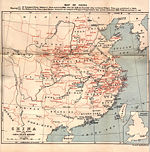
In 1854, Hudson Taylor arrived in China. Historian Kenneth Scott Latourette wrote that "Hudson Taylor was, ...one of the greatest missionaries of all time, and ... one of the four or five most influential foreigners who came to China in the nineteenth century for any purpose...". The China Inland Mission was the largest mission agency in China and it is estimated that Taylor was responsible for more people being converted to Christianity than at any other time since Paul the Apostle brought Christian teaching to Europe. Out of the 8,500 Protestant missionaries that were at one time at work in China, 1000 of them were from the CIM[16]. It was Dixon Edward Hoste, the successor to Hudson Taylor, who originally expressed the self-governing principles of the Three-Self Patriotic Movement, at the time he was articulating the goal of the China Inland Mission to establish an indigenous Chinese church that was free from foreign control.
British and American denominations, such as the British Methodist Church, continued to send missionaries until they were prevented from doing so following the establishment of the People's Republic of China. Protestant missionaries played an extremely important role in introducing knowledge of China to the United States and the United States to China. The book The Small Woman and film Inn of the Sixth Happiness tell the story of one such missionary, Gladys Aylward.
Popularity and Indigenous Growth (1900-1925)
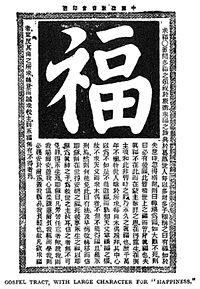
The opening of the twentieth century was a period of transition for both the church and the nation. China moved from Qing dynastic rule to a warlord-dominated republic to a united front of the Guomindang and Chinese Communist party in league against warlords and imperialism. Christianity enjoyed unprecedented popularity for two decades. Variety within the Protestant community increased; conservative, evangelical societies strengthened their presence; the social gospel approach gained momentum, and Chinese formed their own faith sects and autonomous churches.
Reaction to the failures of nineteenth century reform movements and to international humiliation subsequent to the Boxer Uprising helped create a readiness for change in China. Many Chinese assumed that to modernize, China would have to import and adapt from the West. Since missionaries contended that Western progress derived from its Christian heritage, Christianity gained new favor. The missionaries, their writings and Christian schools were accessible sources of information; parochial schools filled to overflowing. Church membership expanded and Christian movements like the YMCA and YWCA became popular. The Manchurian revival swept through the churches of present day Liaoning Province during the ministry of Canadian missionary, Jonathan Goforth. It was the first such revival to gain nationwide publicity in China as well as international repute[26].
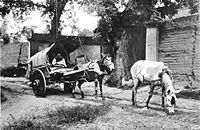
The number of Protestant missionaries had surpassed 8,000 by 1925 and in the process, the nature of the community had altered. Estimates for the Chinese Protestant community ranged around 500,000.
There were also growing numbers of conservative evangelicals. Some came from traditional denomination, but others worked independently with minimal support, and many were sponsored by fundamentalist and faith groups like the Seventh-day Adventist Church, the Christian Missionary Alliance, and the Assemblies of God. Pentecostal, charismatic and Millenarian preachers brought a new zeal to the drive to evangelize the world.
Parochial schools also nurtured a corps of Christian leaders who acquired influential positions in education, diplomatic service and other government bureaus, medicine, business, the Christian church and Christian movements. In the Christian community, individuals like Yu Rizhang (David Yui 1882 - 1936), Zhao Zichen (趙紫宸, 1888-1979), Xu Baoqian (徐寶謙, 1892-1944), and Liu Tingfang (Timothy Liu/劉廷芳, 1890-1947) stand out. Most were characterized with liberal theology, commitment to social reform, deep Chinese patriotism, and acquaintance with Western learning. Many of these leaders held popular revival meetings in Christian schools throughout China and, along with conservative churchmen like Cheng Jingyi (1881-1939), sparked the drive for greater Chinese autonomy and leadership in the church.
They became Chinese spokesmen in the National Christian Council, a liaison committee for Protestant churches, and the Church of Christ in China (CCC), established in 1927 to work toward independence. Even so, progress toward autonomy proved to be slow, for Western mission boards were reluctant to relinquish the power of the pocket book, which gave them a decisive voice in most matters of importance.
Adding to the diversity and also to the conservative trend was the proliferation of completely autonomous Chinese Christian churches and communities, a new phenomenon in Chinese Protestantism. Noteworthy was the China Christian Independent Church (Zhōngguó Yēsūjiào Zìlìhuì), a federation which by 1920 had over 100 member churches, drawn mostly from the Chinese urban class. In contrast was the True Jesus Church (Zhēn Yēsū Jiàohuì), founded in 1917; Pentecostal, millenarian and exclusivist, it was concentrated in the central interior provinces.
Sometimes independence derived not so much from a desire to indigenize Christianity as from the nature of leadership. Wang Mingdao (1900-1991) and Song Shangjie (John Sung, 1901-1944) were zealous, confident of possessing the truth, and critical of what they perceived as lukewarm formalism in the Protestant establishments. They drew on the revivalism and mysticism of Western “faith sects” and the Pentecostalism of the True Jesus Church. During the 1920s and 1930s both Wang and Song worked as independent itinerant preachers, holding highly successful and emotional meetings in established churches and other venues. Their message was simple: “today’s evil world demands repentance; otherwise hell is our destiny”. To this doomsday prophecy, Song added faith healing. Their premillennial eschatology attracted tens of thousands of followers set adrift in an environment of political chaos, civil war, and personal hardship.
Era of National and social change, the Japanese Occupation Period (1925-1949)
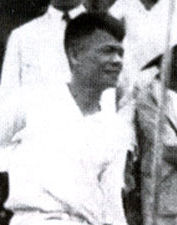
In the aftermath of World War I, many Westerners experienced a crisis of confidence. How could western nations, which had just emerged from one of the most destructive war of modern times, justify preaching morality to others? Volunteers, financial and intellectual support began a steady decline. The 1929 depression soon compounded the economic troubles. Yet the difficulties accelerated indigenization.
Since many Chinese Christian leaders were internationalists and pacifists, the Japanese invasion of Manchuria in 1931 presented a dilemma. Most abandoned their pacifism, and many joined the National Salvation Movement. After the December 1941 Attack on Pearl Harbor , Japan shortly invaded much of China and the Pacific region, with the evacuation or internment of most Westerners. As a result of being separated due to World War II, Christian churches and organizations had their first experience with autonomy from the Western-guided structures of the missionary church organizations. Once again Chinese were left to carry on and once again the Chinese Protestant church moved toward independence, union, or Chinese control. Some scholars suggest this helped lay the foundation for the independent denominations and churches of the post-war period and the eventual development of the Three-Self Church and the CCPA. After the end of the war, the Chinese Civil War began in earnest, which had an effect on the rebuilding and development of the churches after the close of Japanese occupation.
The chaos that was China during the 1930s and 1940s spawned religious movements that emphasized direct spiritual experience and an eschatology offering hope and comfort beyond this cruel world. In opposition to the "Y" and the Student Christian Movement, conservatives organized the Intervarsity Christian Fellowship in 1945; for them, Social Gospel theology was not simply impotent; it had lost sight of the centrality of a personal relationship with the divine. The Jesus Family (Yēsū Jiātíng), founded about 1927, expanded in rural north and central China. Communitarian, pentecostal, and millenarian, its family communities lived, worked and held property jointly; worship often included speaking in tongues and revelations from the Holy Spirit.
The salvationist promise of Wang Mingdao, John Sung, and Ji Zhiwen (Andrew Gih/計志文, 1901-1985) continued to attract throngs of followers, many of them already Christians. Ni Tuosheng (Watchman Nee, 1903-1972), founder of the Church Assembly Hall (nicknamed as "Little Flock"), drew adherents with its assurances of a glorious New Jeruslaem in the next life for those who experienced rebirth and adhered to a strict morality. By 1945, the local churches claimed a membership of over 70,000, spread into some 700 assemblies.[27] The independent churches altogether accounted for well over 200,000 Protestants.
Communist rule
The People's Republic of China was established in October 1949 by the Communist Party of China, led by Mao Zedong. Under Communist ideology, religion was discouraged by the state and Christians endured widespread persecution by authorities over the next three decades.
Between 1949 and 1952, all foreign missionaries left the country in what was described by Phyllis Thompson of the China Inland Mission as a "reluctant exodus", leaving the indigenous churches to do their own administration, support, and propagation of the faith. The Chinese Protestant church entered the communist era having made significant progress toward self-support and self-government. Though Chinese rulers had traditionally sought to regulate organized religion and the CCP would continue the practice, Chinese Christians had gained experience in the art of accommodation in order to protect its members.
From 1966 to 1976 during the Cultural Revolution, the expression of religious life in China was effectively banned, including even the Three-Self Patriotic Movement. The growth of the Chinese house church movement during this period was a result of all Chinese Christian worship being driven underground for fear of persecution. To counter this growing trend of "unregistered meetings", in 1979 the government officially restored the TSPM after thirteen years of non-existence[16], and in 1980 the CCC was formed.
In 1993 there were 7 million members of the TSPM with 11 million affiliated, as opposed to an estimated 18 million and 47 million "unregistered" Protestant Christians respectively.
Persecution of Christians in China has been sporadic. The most severe times were during the Cultural Revolution. Believers were arrested and imprisoned and sometimes tortured for their faith[28]. Bibles were destroyed, churches and homes were looted, and Christians were subjected to humiliation[28]. Several thousand Christians were known to have been imprisoned between 1983-1993[28]. In 1992 the government began a campaign to shut down all of the unregistered meetings. However, government implementation of restrictions since then has varied widely between regions of China and in many areas there is greater religious liberty[28].
Independent churches and a variety of evangelical sects have broadened the appeal of Protestantism, especially in rural China. Although outside observers thought that the Cultural Revolution had ended Christianity in China, Christianity in all its variety had taken root and possessed the strength and techniques to survive decades of hostility and persecution.
Christianity in the contemporary PRC
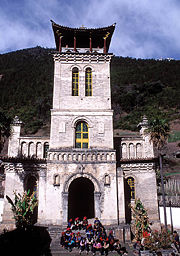
Today, the Chinese language typically divides Christians into two groups, members of Jidu jiao (literally, Christianity), Protestantism, and members of Tianzhu jiao (literally "Lord of Heaven" religion), Catholicism (see Protestantism in China and Catholicism in China.)
Official Christian organizations
Since loosening of restrictions on religion after the 1970s, Christianity has grown significantly within the People's Republic. It is still, however, tightly controlled by government authorities. The Three-Self Patriotic Movement and China Christian Council (Protestant) and the Chinese Patriotic Catholic Association, which has disavowed the Pope and is considered schismatic by other Roman Catholics, have affiliations with government and must follow the regulations imposed upon them.
House churches
Many Christians choose however to meet independently of these organizations, typically in house churches. These fellowships are not officially registered and are sometimes seen as illegal entities and are often persecuted heavily. For this reason some meetings take place underground, coining the term "underground church". These Christians have been persecuted throughout the 20th century, especially during the Cultural Revolution, and there remains some official harassment in the form of arrests and interrogations of Chinese Christians. At the same time, there has been increasing tolerance of house churches since the late 1970s.
Some informal groups have emerged in the 1970s that seem to have been wholly new in origin, or perhaps to have sprouted from earlier seeds but grown into distinctly new movements. One of the best documented of these groups was founded by Peter Xu, an independent evangelist who began preaching in Henan in 1968. his organization, variously called the New Birth Sect (重生派), the Total Scope Church (全范围教会), or the Criers, is accused by some as being heretical. It is distinguished by a strong emphasis on a definitive experience of conversion, usually during an intensive three-day "life meeting", and by an emphasis (some say a requirement) on a confession of sins with tears. Xu has claimed that his organization consists of over 3500 congregations and has sent evangelists to more than twenty of China's provinces. These numbers cannot be independently verified, but it is evident that there are several other organized networks claiming a similarly large number of adherents, and many other groups of smaller scope.
Orthodox Christianity in China
There are a small number of adherents of Russian Orthodoxy in northern China, predominantly in Harbin. The first mission was undertaken by Russians in the 17th century. Orthodox Christianity is also practiced by the small Russian ethnic minority in China. The Church operates relatively freely in Hong Kong (where the Ecumenical Patriarch has sent a metropolitan, Bishop Nikitas and the Russian Orthodox parish of St Peter and St Paul resumed its operation) and Taiwan (where archimandrite Jonah George Mourtos leads a mission church).
Demographics/Geography
It is not known exactly how many Chinese consider themselves Christian. Estimates of Christians in China are difficult to obtain because of the numbers of Christians unwilling to reveal their beliefs, the hostility of the national government towards some Christian sects, and difficulties in obtaining accurate statistics on house churches.
In 2000, the People's Republic of China government census enumerated 4 million Chinese Catholics and 10 million Protestants[29]. The Chinese government once stated that only 1% (13 million) [30] of the population is Christian while the Chinese Embassy states that 10 Million (0.75%)[31] are Christian. The official figure in 2002, which consists of members from Official Protestant churches, is about 15 million, while some estimates on members of Chinese house churches vary from 50 million to 100 million.
The CIA World Factbook indictates that about 3% to 4% of all the population in China are Christians.[32] Independent estimates have ranged from 40 million[30], to 100 million[33], or even 130 million Christians in January 2007 (out of a total population of at least 1.3 billion people).[34][35]
In October 2007 two surveys were conducted to estimate the number of Christians in China. One poll was held by Protestant missionary Werner Burklin, the other one by Liu Zhongyu from East China Normal University in Shanghai. The surveys were conducted independently and during different periods, but they reached the same results.[12][13] According to these studies, there are roughly 54 million Christians in China, of which 39 million are Protestants and 14 million are Catholics as the most common and reliable figure among others.[12][13][14]
Kiven Choy stated, in a Chinese weekly newspaper in Hong Kong, that the correct number of Protestants in China should be at around 20 million, while Time Magazine recently reported 65 million.[36]
There are 4 million members of the Chinese Patriotic Catholic Association and an estimated 12 million members of the underground Roman Catholic Church in China as of 2006.[37]
A relatively large proportion of Christians are concentrated in Hebei province, in particular Catholics. Many internationally-reported arrests of Catholic leaders have occurred in that province. Hebei is also home to the town of Donglu, site of an alleged Marian apparition and pilgrimage center.
Gallery: village churches in south-eastern Hubei
Christianity in Hong Kong
Christianity has been in Hong Kong since 1841. Of about 660,000 Christians in Hong Kong, most of them are Protestants and Roman Catholics.
Christianity in Macau
Roman Catholic missionaries were the first to arrive in Macau.
Protestants record that Tsae A-Ko was the first known Chinese Protestant Christian[38]. He was baptized by Robert Morrison at Macau about 1814.
Christianity in Taiwan
Christianity in Autonomous Regions
Tibet (Xizang Zizhiqu)
Tibet, once a theocratic Buddhist state, has largely resisted Christian influences. At the beginning of the 21st century there are very few Tibetan Christians[39], although recent historical research indicates the presence of some form of Christianity in as early as the sixth and seventh centuries in Tibet, a period when the White Huns had extensive links with the Tibetans.
The first European traveler who appears to have visited Lhasa is the Franciscan Odoric of Pordenone in the first half of the fourteenth century. He was followed by the Jesuits in 1624.[40] These Roman Catholic missionaries to Tibet were the first scholars of Tibetan culture.
In the years 1630 and 1742, Tibetan Christian communities were suppressed by the lamas of the Gelugpa Sect, whose chief lama was the Dalai Lama. Jesuit priests were made prisoners in 1630, or attacked before they reached Tsaparang. Between 1850 and 1880 eleven fathers of the Paris Foreign Mission Society were murdered in Tibet, or killed or injured during their journeys to other missionary outposts in the Sino-Tibetan borderlands. In 1881 Father Brieux was reported to have been murdered on his way to Lhasa. Qing officials later discovered that the murder cases were covertly supported and even orchestrated by local lamaseries and their patrons, the native chieftains. In 1904, Qing official Feng Quan sought to curtail the influence of the Gelugpa Sect and ordered the protection of Western missionaries and their churches. Indignation over Feng Quan and the Christian presence escalated to a climax in March 1905, when thousands of the Batang lamas revolted, killing Feng, his entourage, local Manchu and Han Chinese officials, and the local French Catholic priests. The revolt soon spread to other cities in eastern Tibet, such as Chamdo, Litang and Nyarong, and at one point almost spilled over into neighboring Sichuan Province. The missionary stations and churches in these areas were burned and destroyed by the angry Gelugpa monks and local chieftains. Dozens of local Westerners, including at least four priests, were killed or fatally wounded. The scale of the rebellion was so tremendous that only when panicked Qing authorities hurriedly sent 2,000 troops from Sichuan to pacify the mobs did the revolt gradually came to an end. The lamasery authorities and local native chieftains' hostility towards the Western missionaries in Tibet lingered through the last throes of the Manchu dynasty and into the Republican period.[41]
In 1877 the British Protestant missionary James Cameron of the China Inland Mission walked from Chongqing to Batang Town, Sichuan, bringing the Gospel to the Tibetan people.
In 1993 it was reported that there were a few congregations of Tibetan Christians now living in India[39].
Xinjiang Uygur Zizhiqu
Predominantly Muslim, very few Uygur are known to be Christian. In 1904 George Hunter with the CIM opened the first mission station in Xinjiang. By the 1930s there existed some churches among this people, but because of violent persecution the churches were destroyed and the believers were scattered[39].
Ningxia Hui
Though the Hui people live in nearly every part of China, they make up about 30% of the population of Ningxia. They are almost entirely Muslim and very few are Christian.
Nei Mongol (Inner Mongolia)
- Further information: Christianity in Mongolia
Guangxi Zhuang
Rapid church growth is reported to have taken place among the Zhuang people in the early 1990s[28]. Though still predominantly Buddhist and animistic, the region of Guangxi was first visited in 1877 by Protestant missionary Edward Fishe of the CIM. He died the same year.
International interest

In large, international cities such as Beijing [42], foreign visitors have established Christian church communities which meet in public establishments such as hotels. These churches and fellowships, however, are typically restricted only to holders of non-Chinese passports.
American evangelist Billy Graham visited in China in 1988 with his wife, Ruth, and it was a homecoming for her since she had been born in China to missionary parents, L. Nelson Bell and his wife, Virginia[43].
Since the 1980s, American officials visiting China have on multiple occasions visited Chinese churches, including President George W. Bush, who attended one of Beijing's five officially-recognized Protestant churches during a November 2005 Asia tour,[44][45] and the Kuanjie Protestant Church in 2008.[46][47] During an official visit to Beijing for the Beijing Olympic Games, Australian Prime Minister of Kevin Rudd with his wife Therese attended the Northern Cathedral, Beijing, for Sunday services in August 2008.[48]. Secretary of State Condoleezza Rice attended Palm Sunday services in Beijing in 2005.
During the 2008 Summer Olympics in Beijing, three American Christian protesters were deported from China after a demonstration at Tiananmen Square,[49][50][51] and eight Dutch Christians were stopped after attempting to sing in chorus.[52] Pope Benedict XVI urged China to be open to Christianity, and said that he hoped the Olympic Games would offer an example of coexistence among people from different countries.[53]
References
- Austin, Alvyn (2007). China’s Millions: The China Inland Mission and Late Qing Society. Grand Rapids, Michigan: Eerdmans. ISBN 978-0-8028-2975-7.
- Burgess, Alan (1957). The Small Woman. ISBN 1568491840.
- Gulick, Edward V. (1975). Peter Parker and the Opening of China. Journal of the American Oriental Society, Vol. 95, No. 3 (Jul. - Sep., 1975).
- Latourette, Kenneth Scott (1929). A History of Christian Missions in China.
- Spence, Jonathan D. (1991). The Search for modern China. W. W. Norton & Company. ISBN 0393307808.
- Taylor, James Hudson (1868). China's Spiritual Need and Claims (Third Edition). London: James Nisbet.
- Soong, Irma Tam (1997). Sun Yat-sen's Christian Schooling in Hawai'i. Hawai'i: The Hawaiian Journal of History, vol. 13.
Notes
- ↑ 1.0 1.1 Austin, Alvyn (2007). China’s Millions: The China Inland Mission and Late Qing Society. Grand Rapids, Michigan: Eerdmans. ISBN 978-0-8028-2975-7.
- ↑ Johnstone, Patrick (2001). Operation World. London: Paternoster. p.165
- ↑ "China's Christians suffer for their faith". BBC News (2004-11-09). Retrieved on 2008-05-06.
- ↑ 16th century Catholic polemicists said it follows the doctrines of Archbishop Nestorius, an assertion which the Assyrian Church rejects as false
- ↑ 5.0 5.1 "Research: Christianity popular among China's Tang Dynasty citizens". China View (2008-02-27). Retrieved on 2008-05-06.
- ↑ God's Chinese Son, Jonathan Spence, 1996
- ↑ Gulick, Edward V. (1975). Peter Parker and the Opening of China. Journal of the American Oriental Society, Vol. 95, No. 3 (Jul. - Sep., 1975)., pp. 561-562
- ↑ Burgess, Alan (1957). The Small Woman. ISBN 1568491840., pp. 47
- ↑ Soong, Irma Tam (1997). Sun Yat-sen's Christian Schooling in Hawai'i. Hawai'i: The Hawaiian Journal of History, vol. 13., p. 151-178
- ↑ "International Religious Freedom Report 2007". U.S. Embassy in Beijing. Retrieved on 2008-08-10.
- ↑ "China: Persecution of Protestant Christians in the Approach to the Beijing 2008 Olympic Games" (PDF). Christian Solidarity Worlwide. ChinaAid. Retrieved on 2008-08-10.
- ↑ 12.0 12.1 12.2 China Survey Reveals Fewer Christians than Some Evangelicals Want to Believe
- ↑ 13.0 13.1 13.2 New China survey reveals fewer Christians than most estimates
- ↑ 14.0 14.1 CIA - The World Factbook - China
- ↑ Christianity_in_China#Demographics.2FGeography
- ↑ 16.0 16.1 16.2 16.3 Johnstone, Patrick (2001). Operation World. London: Paternoster. p.164
- ↑ Counting Christians in China: a cautionary report. Industry & Business Article - Research, News, Information, Contacts, Divisions, Subsidiaries, Business Associations
- ↑ Church growth in China.(Century marks)(Brief article) Industry & Business Article - Research, News, Information, Contacts, Divisions, Subsidiaries, Business Associations
- ↑ Latourette, (1929)
- ↑ Chinese Cultural Studies: Concise Political History of China
- ↑ The Great War: A Review of the Explanations
- ↑ Spence (1991), p. 206
- ↑ Taylor (1865),
- ↑ 24.0 24.1 Spence, Jonathan D. (1991). The Search for modern China. W. W. Norton & Company. ISBN 0393307808., p. 206
- ↑ Spence, Jonathan D. (1991). The Search for modern China. W. W. Norton & Company. ISBN 0393307808., p. 208
- ↑ Blumhofer, Edith Waldvogel (1993). Modern Christian Revivals. University of Illinois Press. ISBN 0252019903. p.162
- ↑ Kauffman, Paul E.: China Yesterday. Hong Kong: Asian Outreach, 1975: 100-101.
- ↑ 28.0 28.1 28.2 28.3 28.4 Johnstone, Patrick (2001). Operation World. London: Paternoster. p.168
- ↑ China in Brief - china.org.cn
- ↑ 30.0 30.1 BBC NEWS | Asia-Pacific | Survey finds 300m China believers
- ↑ China Refutes Distortions about Christianity
- ↑ The CIA World Factbook - China
- ↑ Key Chinese House Church Leader's Testimony
- ↑ The Religion Report - 8August2007 - China Missionaries expelled
- ↑ China (includes Hong Kong, Macau, and Tibet)
- ↑ Time Magazine
- ↑ Taipei Times
- ↑ Horne (1904), chapter 5
- ↑ 39.0 39.1 39.2 Johnstone, Patrick (2001). Operation World. London: Paternoster. p.167
- ↑ Catholic Encyclopedia Article on Tibet
- ↑ When Christianity and Lamaism Met: The Changing Fortunes of Early Western Missionaries in Tibet by Lin Hsiao-ting
- ↑ BICF
- ↑ "Billy Graham: an appreciation: wherever one travels around the world, the names of three Baptists are immediately known and appreciated--Jimmy Carter, Billy Graham and Martin Luther King, Jr. One is a politician, one an evangelist, and the other was a civil rights leader. All of them have given Baptists and the Christian faith a good reputation. (Biography)", Baptist History and Heritage (June 22, 2006). Retrieved on 2007-08-18.
- ↑ Newsday
- ↑ Washington Post
- ↑ "President Bush Visited Officially Staged Church Service; House Church Pastor Hua Huiqi Arrested and Escaped from Police Custody". China Aid (2008-08-10). Retrieved on 2008-08-10.
- ↑ "Bush visits controversial Beijing church". Beijing News (2008-08-10). Retrieved on 2008-08-10.
- ↑ http://www.pm.gov.au/media/Interview/2008/interview_0405.cfm
- ↑ Blanchard, Ben (2008-08-07). "Beijing police stop protest by U.S. Christians". Reuters. Retrieved on 2008-08-08.
- ↑ Schou, Solvej (2008-08-08). "Protesters describe removal from Tiananmen Square". Associated Press. Retrieved on 2008-08-08.
- ↑ Carlson, Mark (2008-08-07). "U.S. Demonstrators Taken From Tiananmen Square". Associated Press. Retrieved on 2008-08-08.
- ↑ "Three Protesters Dragged Away From Tiananmen Square". Epoch Times (2008-08-07). Retrieved on 2008-08-08.
- ↑ Petroff, Daniela (2008-08-07). "U.S. Demonstrators Taken From Tiananmen Square". Associated Press. Retrieved on 2008-08-08.
Bibliography
- Historical Bibliography of Christianity in China
- Historical Bibliography of the China Inland Mission
- The Church of the Tang Dynasty, John Foster, SPCK, London, 1939
- The Lost Churches of China, Leonard M. Outerbridge, Westminster Press, Philadelphia, 1952
- The Story of Mary Liu, Edward Hunter, Hodder & Stoughton, London, 1956
- Come Wind, Come Weather, Leslie Lyall, Hodder & Stoughton, London, 1956
- Red Sky at Night, Leslie Lyall, Hodder & Stoughton, London, 1961
- Christianity in China, George N. Patterson, World Books, London, 1969
- The Cross and the Lotus, Lee Shiu Keung, Christian Study Centre on Chinese Religion and Culture, Hong Kong, 1971
- Decision for China, Paul T. K. Shi, St John's University Press, N.Y., 1971
- The Jesus Family in China, D. Vaughan Rees, Paternoster Press, Exeter, 1973
- Christians and China, V. Hayward, Christian Journals Ltd, Belfast, 1974
- Nathan Sites: An Epic of the East, Sarah Moore Sites, Revell, New York, 1912
- The Memory Palace of Matteo Ricci, Jonathan D. Spence, New York, 1984
- Jesus in Beijing, David Aikman, Regnery Publishing Inc., Washington D.C., 2003
- China's Christian Millions (New Edition, Fully Revised and Updated) Lambert, Tony (2006)
- Counting Christians in China: a cautionary report.: An article from: International Bulletin of Missionary Research Lambert, Tony(2005)
- The Resurrection of the Chinese Church Lambert, Tony(1994)
- The Believing Heart, C.S. Song, Minneapolis: Fortress, 1999.
- Theology from the Womb of Asia, C.S. Song, Maryknoll: Orbis, 1986.
- Tell Us Our Names, C.S. Song, Maryknoll: Orbis, 1984
- Third Eye Theology, C.S. Song, Maryknoll: Orbis, 1979
- What Has Jerusalem to Do With Beijing? K. K. Yeo, Harrisburg: Trinity: 1998.
External links
- Biographical Dictionary of Chinese Christianity
- Christianity Spreading in China
- Information on the Church in China
- Amity News Service, official website associated with the China Christian Council
- "Missionaries made in China" in MercatorNet, February 23, 2006
- http://www.newadvent.org/cathen/03669a.htm
- Surveys/analyses of religious freedom in China by Forum 18 News Service
- Churches of the Wuyi Region
- TIME Magazine, "The War for China's Soul: As Christianity begins to reshape the nation, TIME learns new details about a crackdown on one church"
- International Christian Concern "Report on China"
- Methodist Missions in China
- Chinese Bible Resources
- Bible in Chinese, by Catholic Missionaries in Asia
- 'Jesus Christ's sister' is arrested in China by Venkatesan Vembu, Daily News & Analysis, November 24, 2007
- OMF International (formerly China Inland Mission and Overseas Missionary Fellowship)
|
|||||||||||
|
|||||||||||||||||||||||||
